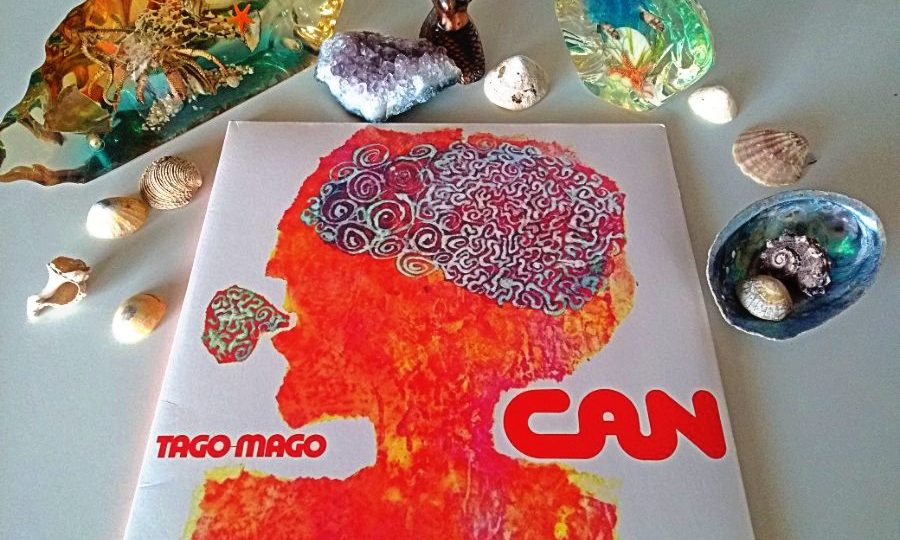
Dig The GROOVE: 16 of the Best Basslines
March 24 is the birthday of two of the most legendary bassists in music history: Carol Kaye and Holger Czukay.
Carol Kaye was a rarity in the male-dominated Hollywood industry of the 1960s- a female musician who could outperform most of her male counterparts. She was the go-to bassist for Los Angeles studio sessions and was a member of the famous “Wrecking Crew” who assisted Phil Spector in creating his Wall of Sound (The Ronettes’ “Be My Baby”, The Crystals’ “Then He Kissed Me”, etc.) and assisted Brian Wilson in realizing his vision for The Beach Boys’ Pet Sounds. Carol Kaye played on sessions for Jan and Dean, The Righteous Brothers, The Mamas and the Papas, Ike and Tina Turner, Nancy Sinatra, Lee Hazlewood, Simon & Garfunkel, Sonny & Cher, Frank Zappa and the Mothers of Invention, etc.
Holger Czukay was a student of avant-garde composer Karlheinz Stockhausen and taught music in Cologne. He got turned on to rock’n’roll after hearing The Velvet Underground and formed the band Can in 1968. Can was equally inspired by electronic experimentation, funk, rock, and world music. The band jammed for hours and edited their jams into tracks for their records. The most influential of their albums are their triumvirate with Japanese vocalist Damo Suzuki: Tago Mago, Ege Bamyasi, and Future Days.
Carol Kaye and Holger Czukay are two of the bassists featured on the following playlist of the 16 best basslines.
Carol Kaye – “Urizen” (1968)
Recorded at Capitol Studios (Los Angeles), the opening track from David Axelrod’s baroque, cinematic, psychedelic Song of Innocence album is elevated to epic status through the acid rock guitar, blasts of brass, grandeur of the orchestra strings, and a perfect rhythm section: Carol Kaye on bass and Earl Palmer on drums. This record has been sampled countless times by hip-hop producers and rappers because of absolutely genius moments like Carol Kaye’s astonishing, fast bassline at the 2:22 mark.
James Alexander – “Hyperbolicsyllabicsesquedalymistic” (1969)
Recorded at Ardent Studios (Memphis), Isaac Hayes’ Hot Buttered Soul is a landmark recording (read Raghav Raj’s excellent review of the record here on the VinylWriters website) and when Isaac Hayes, backed by female vocalists, drums, piano, and wah-wah guitar, exhorts the listener to “dig the groove” in his 9-minute soul ramble, James Alexander (bassist of the Stax label band the Bar-Kays) gives heft to the track with his low end bass thump.
https://www.youtube.com/watch?v=12G0UpX7L_I
Billy “Bass” Nelson – “Music for My Mother” (1970)
Recorded at Tera Shirma Sound Studios (Detroit) in 1969, Funkadelic’s psychedelic self-titled debut did not sound like any other album of its time when it was released in 1970. While the majority of songs on the record contained writing credits solely attributed to George Clinton, this track was co-written by guitarist Eddie Hazel and bassist William Nelson. The aptly named “Herb Sparkman” is the vocalist on this deep south, heavy-lidded, head nod anthem to “raw funk”–the raw funk here perspiring from Billy Nelson’s sweaty bass groove.
Cecil McBee – “Journey in Satchidananda” (1971)
Recorded in 1970 at Alice Coltrane’s home studio, Journey in Satchidananda is the most mystical, spiritual jazz album of all time. Alice Coltrane’s celestial harp and piano, Pharaoh Sanders’ saxophone, Rashied Ali’s drums, Tulsi’s tamboura, and Majid Shabazz’s bells create an atmosphere that exhales incense and meditative vibes. The first sound you hear on the record (and the sound that guides every song) is Cecil McBee’s deep double bass, the earthy heartbeat of this incredible improvisation.
Donald “Duck” Dunn – “Melting Pot” (1971)
Recorded at Stax Studios (Memphis) in 1970, Booker T (on Hammond organ) & the M.G.’s (Steve Cropper on guitar, Donald Dunn on bass, Al Jackson Jr. on drums) stretched out more than they ever had before in the track “Melting Pot”. This 8-minute hypnotic jam is perfect for driving out on the open road. Donald Dunn and Al Jackson are clockwork synched–the tightest rhythm section you will ever hear.
Holger Czukay – “Halleluhwah” (1971)
Recorded at the end of 1970 in a castle (Schloss Norvenich) in Germany, Can’s Tago Mago is the band at their most experimental and far out. “Halleluhwah” is the centerpiece of the record, its longest track–an 18-minute epic where Holger Czukay on bass, Jaki Liebezeit on drums, and Michael Karoli on guitar lock into a mesmerizing vamp that pushes it onward and onward as Damo Suzuki lets loose. Between the 15 and 16 minute point, Irmin Schmidt’s keyboards seem to spiral out of control, but Holger Czukay always guides the group back to the groove.
Bob Babbitt – “Inner City Blues” (1971)
Recorded at Hitsville USA (Detroit), the closing track of What’s Going On is Marvin Gaye’s greatest song. His important lyrics lament the crime, poverty, and violent policing of African American neighborhoods (still issues in the U.S. today), the corrupt economy and politicians, and the Vietnam War as he plays piano and the Detroit Symphony Orchestra creates a cinematic urgency. This song has been sampled countless times because of Bobbye Hall’s bongo rhythms and Bob Babbitt’s melodic, subtle bass playing.
Ron Carter – “The Revolution Will Not Be Televised” (1971)
Recorded at RCA Studios (New York City) for poet Gil Scott-Heron’s first studio album Pieces of a Man, “The Revolution Will Not Be Televised” was ahead of its time and innovative with Gil Scott-Heron’s brilliant social commentary in his spoken word vocal performances heavily influencing future hip-hop and rappers. This track has been sampled countless times because of the funky flute from Hubert Laws, Bernard Lee “Pretty” Purdie’s drums, and, most of all, jazz legend Ron Carter’s commanding bassline.
Geezer Butler – “Into the Void” (1971)
Recorded for the band’s Master of Reality album, “Into the Void” is the closing track and arguably the heaviest track Black Sabbath ever made- it was a huge influence on heavy metal (Kyuss, Metallica, Monster Magnet, Sleep, etc. were all inspired by its massive sound.) This massive sound was due not only to Tony Iommi’s guitar riffage, but also because of Geezer Butler’s apocalyptic bass. The track truly takes off at the 1:27 mark when Geezer Butler’s bass growls out of the murk.
Wilton Felder – “Sweet Thang” (1971)
Shuggie Otis was the heir to Jimi Hendrix. He is an unsung guitar hero and Freedom Flight is his underrated masterpiece- recorded when he was only a teenager! Shuggie could create beautiful, delicate, psychedelic love songs (“Strawberry Letter 23” is a celestial companion piece to “Little Wing”), fiery and smoky jams (“Purple”), and free jazz improvisation (“Freedom Flight”). He could also do blues and funk: “Sweet Thang” (co-written with Shuggie’s father Johnny Otis on drums) is a dark and swampy groove, Shuggie’s bottleneck guitar, George Duke’s organ, and the deeply soulful background female vocalists laying down an atmosphere thick as molasses. Wilton Felder’s down’n’dirty bass is the center of this track.
Joseph “Lucky” Scott – “Pusherman” (1972)
Recorded at RCA and Bell Sound (Chicago and New York), Curtis Mayfield’s soundtrack to the Blaxploitation hit Superfly became his biggest hit and is another example of a soundtrack that is much superior to the movie. “Pusherman” kicks open the door with Joseph “Lucky” Scott’s often sampled bassline, accompanied by “Master” Henry Gibson’s funky percussion, as Curtis Mayfield sings about the drug dealer superstar.
Bob Babbitt – “Papa Was a Rollin’ Stone” (1972)
Bob Babbitt makes a second appearance on this list because he was the bassist for perhaps the two best soul songs not only of the 1970s but of all time: Marvin Gaye’s “Inner City Blues” and The Temptations’ “Papa Was a Rollin’ Stone” (both songs recorded at Hitsville USA in Detroit.) The nearly 12-minute long song opens with maybe the most instantly recognizable bassline. It is a simple series of notes that signals something much more substantial. The cinematic strings and horns, wah-wah guitar, keyboards, and handclaps follow for the first four minutes of the track until the singers tell the poignant story of the absent, missing father.
George Murray – “Stay” (1976)
Recorded in 1975 at Cherokee Studios (Los Angeles), the Station to Station sessions were David Bowie lost in his cocaine addiction (he claims to not even remember the recording of the album) and Bowie’s best band (Carlos Alomar on rhythm guitar, George Murray on bass, and Dennis Davis on drums) was also indulging in the white powder during late night jams. “Stay” is David Bowie at his funkiest (he was one of the only white performers to appear on Soul Train in the 1970s.) George Murray’s high-powered bass drives the track.
Paul Simonon – “Guns of Brixton” (1979)
The Clash set themselves apart from the other British punk rockers because they were more accomplished and more musically omnivorous. The Clash drew on a wide variety of genres. Recorded for The Clash’s most famous album London Calling, “Guns of Brixton” (referencing the impoverished, rough region of London) is a dub influenced track (one of the strongest tracks on the record) with Paul Simonon’s aggressive bassline accentuating the tough lyrics.
Gary
“Mani” Mounfield – “Fools
Gold” (1989)
Recorded
at Sawmills Studio (Cornwall), “Fools Gold” was British band The
Stone Roses’ biggest hit and is the quintessential Madchester
track. Mani’s bassline is addicting, cool, and infectious–the
perfect soundtrack to the acid house Ecstasy experiences of
Generation X. Reni’s head nodding drums, John Squire’s wah-wah
guitar, and Ian Brown’s lyrics (inspired by John Huston’s
Treasure
of the Sierra Madre)
complete the sound, but Mani’s show-stopping bass is clearly the
center of this 9:55 dance party.
Simon Jones – “Gravity Grave” (1992)
The Verve were originally an ethereal, experimental, psychedelic band, led by the mindblowing guitar of Nick McCabe. This 8-minute epic (released as a single!) is one of the greatest gems of the 1990s: euphoric, hallucinogenic bliss-out that is consciousness expanding with the swirling soundscapes of harmonica, flute, guitar, and Simon Jones’ echoing, hypnotic bass groove.
by Mark Lager

Some absolutely incredible hard-hitters here. Bravo!
Cheers Colin! Glad you dig it!
Awesome playlist! Claudia
Cheers Claudia! Glad you dig it!
Thanks Saliha, Claire, Nick!
This playlist is heavenly. I think I’ll add this to the spring line-up….how can you go wrong here????
Really dig this new series of playlists!
I am all over this playlist. Elegant flow. Great work.